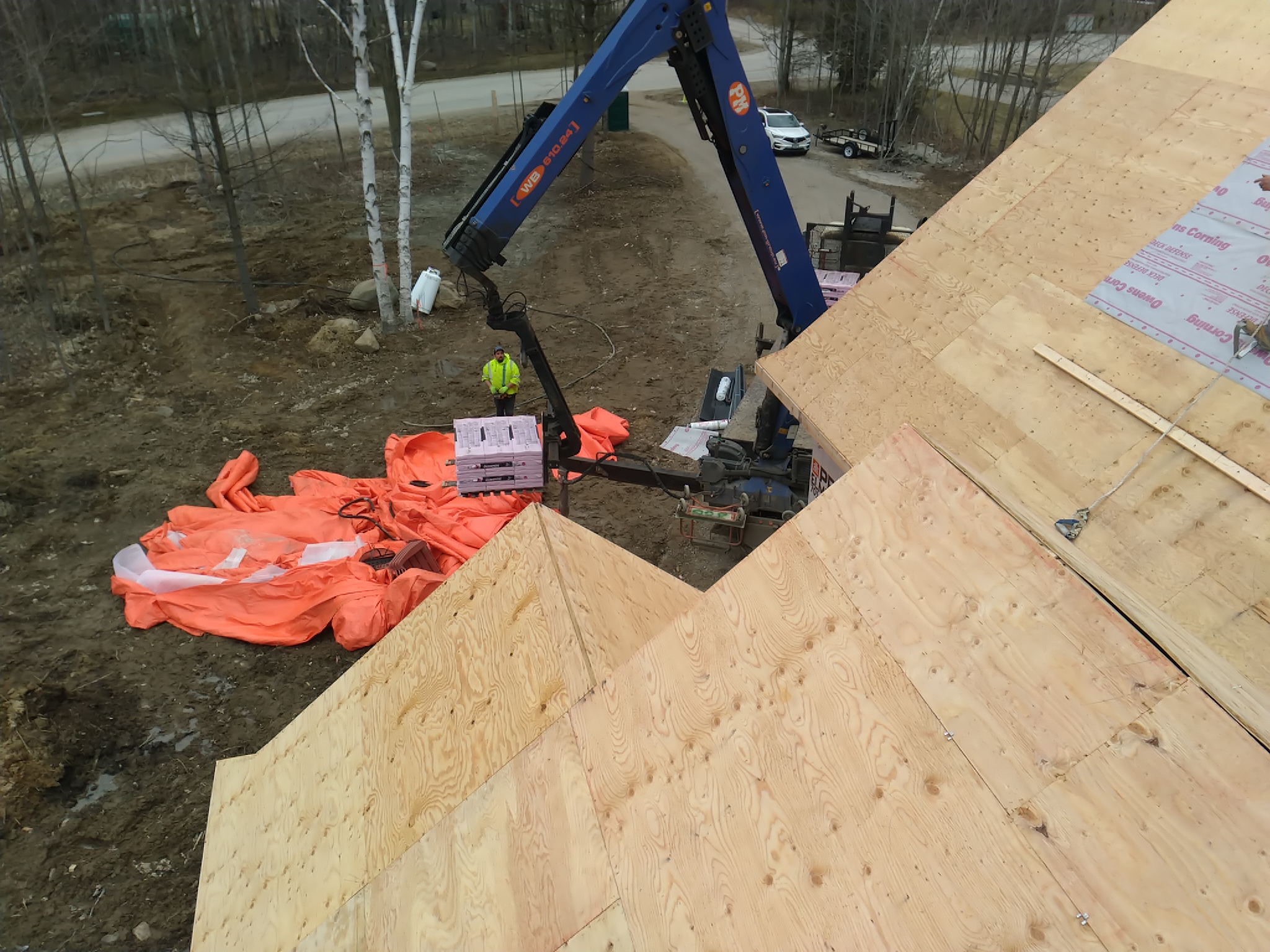Introduction
Your roof, as the first line of defense against the elements, is significantly influenced by local weather conditions. Whether it’s scorching summers, freezing winters, or unpredictable storms, understanding how weather affects your roof is crucial for its long-term health. In this guide, Ainger Roofing, a roofing company in Collingwood, will delve into the impact of local weather conditions on roofing and provide insights on maintaining a weather-resilient roof.

Unraveling the Elements: How Weather Affects Your Roof
Heat and Sun Exposure
In regions with hot climates, prolonged exposure to intense sunlight can take a toll on roofing materials. Over time, this heat exposure can cause shingles to deteriorate, leading to cracks, warping, and loss of granules. Regular inspections and investing in heat-resistant roofing materials are key to mitigating the impact of scorching temperatures.
Cold and Freezing Temperatures
Cold weather poses its own set of challenges, especially in regions prone to freezing temperatures. The expansion and contraction of roofing materials during freeze-thaw cycles can lead to cracking, weakening the roof’s integrity. Adequate insulation and proper ventilation are crucial in preventing ice dams and preserving the stability of the roof structure.
Rain and Moisture
Excessive rainfall, common in certain climates, can result in water damage to roofs. Leaks, mold growth, and rot are potential consequences of inadequate drainage or damaged roofing materials. Regular gutter maintenance and prompt repairs to damaged shingles are essential in preventing water-related issues.
Wind and Storms
High winds and storms can cause substantial damage to roofs, especially if they are not properly installed or maintained. Loose or missing shingles, lifted flashing, and even structural damage are common outcomes. Regular roof inspections, secure installations, and timely repairs after storms are vital in ensuring the roof’s resilience against wind-related challenges.
Hail and Impact Damage
Hailstorms can wreak havoc on roofs, causing dents, fractures, and punctures in roofing materials. The severity of damage often depends on the size of the hailstones. Impact-resistant roofing materials, combined with quick inspections and repairs, can help minimize the effects of hailstorms.
Maintaining a Weather-Resilient Roof: Tips and Strategies
Regular Roof Inspections
Frequent roof inspections, at least annually and after severe weather events, are crucial for identifying and addressing potential issues promptly. Professional inspections can uncover hidden damage that might not be visible from the ground.
Prompt Repairs
Addressing minor issues promptly can prevent them from escalating into major problems. Whether it’s a missing shingle, damaged flashing, or a small leak, quick repairs are essential in maintaining the weather resilience of your roof.
Weather-Appropriate Roofing Materials
Choosing roofing materials that are well-suited to your local climate is a proactive step in ensuring weather resilience. Consult with roofing professionals to determine the most suitable materials based on your region’s weather conditions.
Proper Ventilation and Insulation
Ensuring proper attic ventilation and insulation helps regulate temperature and moisture levels, reducing the risk of issues like ice dams in colder climates and excessive heat absorption in warmer regions.
Gutter Maintenance
Functioning gutters are critical for directing water away from the roof and preventing water-related damage. Regular gutter cleaning and maintenance are essential components of weather-resilient roof care.
Frequently Asked Questions (FAQs) about Weather and Roofing
Can a Roof Withstand Extreme Weather Conditions?
The ability of a roof to withstand extreme weather conditions depends on factors such as quality of materials, proper installation, and timely maintenance. Some roofs are designed to handle specific weather challenges better than others.
How Often Should I Schedule Roof Inspections?
At least once a year is recommended, but more frequent inspections are advisable after severe weather events or if you notice signs of damage. Professional inspections provide a comprehensive assessment.
Are Metal Roofs Better in Hail-Prone Areas?
Yes, metal roofs are often more resistant to hail damage than traditional asphalt shingle roofs. Their durability and impact resistance make them a popular choice in hail-prone regions.
Can Wind Damage to a Roof Be Prevented?
Secure roof installations, regular inspections, and timely repairs are crucial in preventing wind damage. Choose wind-resistant roofing materials and ensure proper flashing and shingle fastening.
What Causes Ice Dams, and How Can They Be Prevented?
Ice dams form when warm air in the attic causes snow on the roof to melt and refreeze at the eaves. Proper insulation, ventilation, and timely removal of accumulated snow can prevent ice dam formation.
How Long Should a Roof Last in Various Climates?
The lifespan of a roof varies based on factors like material, climate, and maintenance. While asphalt shingle roofs typically last 20-30 years, metal roofs can exceed 50 years with proper care.
Conclusion
Understanding the impact of local weather conditions on your roof is fundamental to maintaining its longevity and resilience. Roofers in Collingwood say by implementing proactive measures, choosing weather-appropriate materials, and investing in regular inspections, you can ensure that your roof remains a sturdy shield against the elements for years to come.

